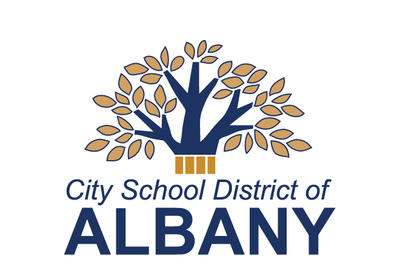
Grade 5 expectations
New York State learning standards outline what a student should know and be able to do by the end of the grade level. There are also additional skills that a well-rounded student should possess. Listed below are examples of academic expectations for ffith grade students. These should be viewed holistically and are not meant to determine promotion or retention; a student may demonstrate or be on track for proficiency without having mastered every skill. Teachers intervene as appropriate to support skills development.
- Use combined knowledge of letter-sound correspondences, syllable types and morphology (e.g., roots and affixes) to read unfamiliar multisyllabic words
- Read grade-level text with accuracy, appropriate rate and expression
- Provide relevant and specific details from texts to support answers and inferences
- Determine a main idea, theme or central idea and explain how it is supported by key details; summarize a text
- Compare/contrast two or more texts, including overall structure
- Explain how chapters or scenes fit together to provide story structure
- Describe how point of view influences the description of events
- Explain how claims in a text are supported by relevant reasons and evidence, identifying which reasons and evidence support which claims
- Read and comprehend grade 5 literature and informational texts
- Engage in collaborative discussions, give oral reports, share information and/ or recount an experience
- Express ideas clearly and build on those of others
- Come to discussions prepared, having read or studied required material
- Use context clues and knowledge of common Greek and Latin roots, prefixes and suffixes to determine word meaning
- Interpret figurative language, including similes and metaphors
- Explain the meaning of common idioms, adages and proverbs
- Demonstrate grade-appropriate use of spelling, grammar, usage and mechanics
- Write an opinion/argument to support claims with relevant evidence
- Write informative/explanatory texts to convey ideas and relevant information
- Write narratives using effective technique, descriptive details and sequencing
- Use transition words to help develop key ideas
- Conduct research projects using several sources
- Take notes and create outlines using appropriate strategies
- Grade Level Fluencies: Multi-digit multiplication
- Geometry
- Graph points on the coordinate plane to solve real world and mathematical problems
- Classify two-dimensional figures into categories based on their properties
- Operations and Algebraic Thinking
- Write and interpret numerical expressions
- Analyze patterns and relationships
- Number and Operations in Base Ten
- Read, write and compare decimals to 1,000ths
- Perform the four operations with multi-digit whole numbers and decimals
- Use place value understanding to round decimal to any place
- Number and Operations Fractions
- Use equivalent fractions as a strategy to add and subtract fractions
- Extend understanding of multiplication and division to multiply and divide fractions
- Measurement and Data
- Convert like measurement units within a given measurement system
- Represent and interpret data using line plots involving fractions
- Understand concepts of volume; relate volume to multiplication and addition with real world problems
- Understand and apply scientific concepts related to Physical, Earth, and/or Life Science
- Recognize the historical development of ideas in science; structure and properties of matter; matter and energy in organisms and ecosystems; Earth’s systems and space systems; stars and the solar system
- Use scientific equipment to take measurements using standard metric units
- Recognize that objects have properties that can be observed, described and/or measured (e.g., states of matter, density, temperature, conductor, volume, etc.)
- Use scientific inquiry to demonstrate understanding of the scientific process and concepts by making observations and testing proposed explanations
- Understand the history and geography of the Western Hemisphere; development of cultures, civilizations and empires; interaction between societies; comparisons of governments and economic systems of modern nations
- Identify the relationship between geography, economics and history in the Western Hemisphere
- Examine the effects of European colonization on native populations and how it led to the transatlantic slave trade
- Use the elements and principles of art and design to communicate meanings and ideas
- Use various materials/tools including digital technology to promote creativity
- Identify, discuss, create, interpret, present and reflect on artistic concepts from various world cultures throughout time collaboratively and independently
- Maintain tone, pitch, rhythm, tempo and dynamics while singing
- Use instruments to create and perform music
- Identify, interpret, discuss elements of music such as melody, rhythm, harmony, form and style to evaluate and perform musical works from various world cultures, specific interests and experiences, and explain context
- Perform basic motor and manipulative skills and movement patterns
- Show competence in a variety of activities
- Demonstrate safe and responsible personal and social behavior
Keep your child engaged at home
The following are simple every day activities you can do at home and in the world to help support what your child is learning during the school day.
- Set aside quiet time every day for reading. Ask your student questions about the book they have chosen. Read the book yourself to foster better conversation.
- Encourage students to select books about science, history, art, music and famous people.
- Expect students to write daily using the strategies learned in school. Writing about what they have read improves their comprehension.
- Play word games like Scrabble. Keep a “word log” for new words students discover.
- Practice basic facts by posing problems to solve mentally; expect a quick response.
- Involve your student in tasks at home that require math like cooking, measuring, building, etc.
- Allow students to make a mistake and problem-solve a better solution.
- Ask students to communicate and defend their thinking on various topics.




